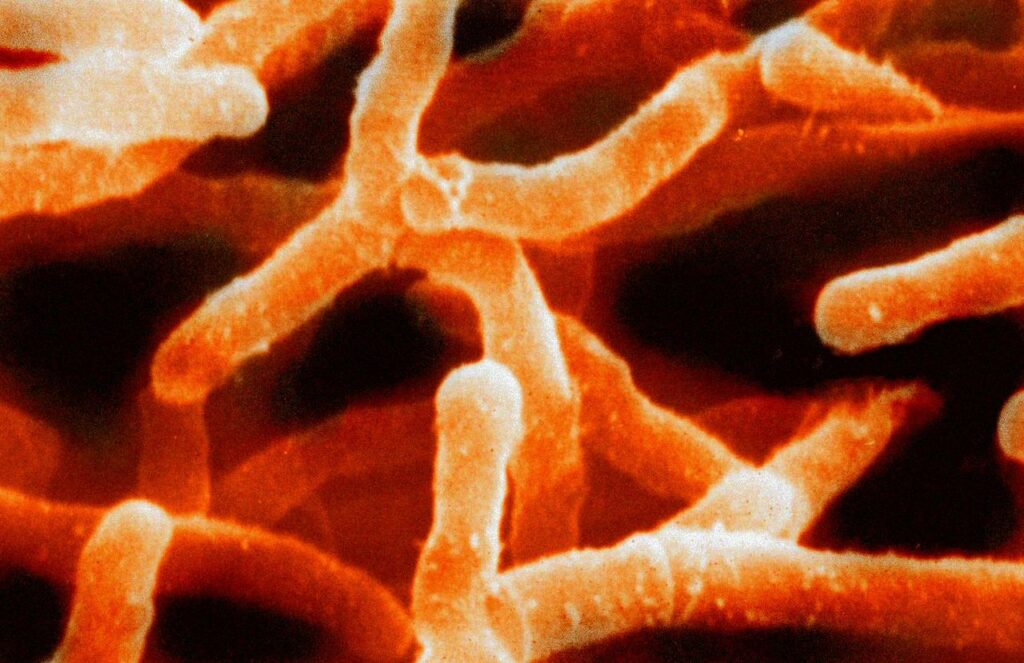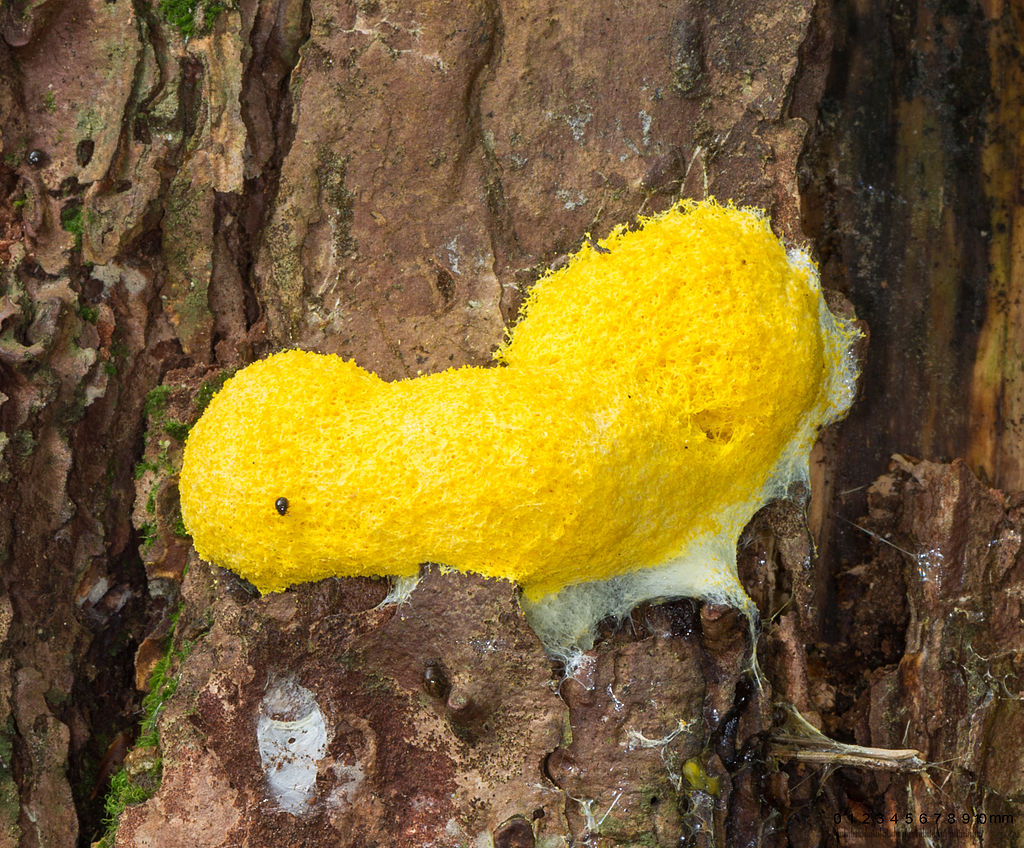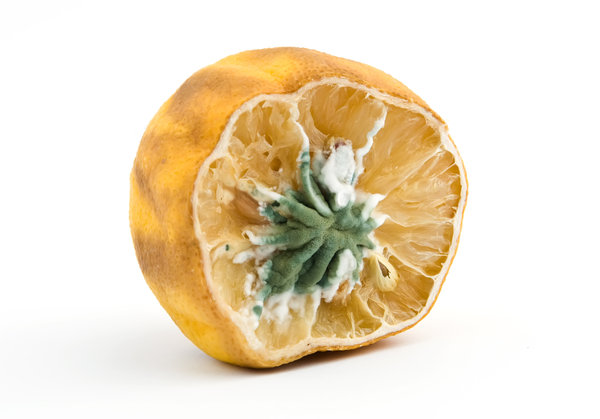Periodically, you may look in on your compost pile and see mold on your compost material. Our whole lives, we’ve been taught that mold is bad, and we don’t want it. But for compost, you have to wonder, is compost in mold bad? Do we need to do something to remove the compost mold?
We will be talking about compost mold, what causes compost in mold, and what you should be concerned about. Spoiler alert – it’s not a problem. You may want to look at a few things, but mold can be a good sign.
Let’s learn about mold!
What Mold in Compost Looks Like
Mold is a living organism. It’s actually a type of fungus, like mushrooms (but much different, obviously). It’s spread when its spores, which are always around us, find an area with the right environment to let it grow.
Mold likes warm, moist areas. Given that two of the core components of good compost is moisture and warmth generated by the organisms that cause the decomposition, compost is a great environment for mold to grow.
There are three major types of mold on compost that we usually see. You can recognize them based on their color.

White – This is commonly seen on pieces of wood in your compost. It’s a very good sign that your compost is decomposing correctly. It’s probably actually not mold but a type of bacteria called actinomycetes. Some bacteria help with the composting process.

Yellow – This is a form of mold called Fuligo Septica, or “Dog Vomit Mold” and is a sign of healthy compost. When it’s blooming, it will appear yellow. When not blooming, it might actually just look slimy.

Green – This is the most common mold that you will see. You often see it on the food particles in your compost.
Pink – This usually happens because you’ve gotten cleaning products in your compost. Perhaps you cleaned out the bin you use in your kitchen, or you threw in a paper towel that you used to wipe up cleaning supplies.
In general, mold in your compost is just fine and can even indicate a healthy compost pile. Pink mold is a problem that we will talk about in more detail below.
There are a couple of things that are worth checking out, but mold itself is not a problem. If the mold starts to take over your compost, you definitely need to check a few things.
Do I need to Be Worried About Mold On Compost?
Mold is often actually a good sign. It’s a part of the decomposition process, and compost mold is very common. As we will talk about in a few minutes, there are a few things you may want to look at to be sure it’s not a problem, but as long as you have a moderate amount of mold, it’s very normal and should be gone by the time that your compost is done.
What if The Compost Mold Smells Bad?
If you have mold in compost and it smells bad, this might be a sign of another problem. Actually, stinky compost in general, is a problem. It might be a sign that anaerobic bacteria have started to grow and, rather than composting, your food is basically rotting.
Compost should not stink. It might have a musty, earthy smell, but it shouldn’t be unpleasant overall. Mold in compost, stinky, and a sludgy appearance are bad signs and probably indicate not enough air in your compost.
If your compost stinks, you want to turn it (stir it up) after adding some sticks, cardboard, or other brown material with some substance to it. You still want small pieces, but these cause air pockets to form inside your compost where the air gets trapped, and the aerobic bacteria can use that.
Green Mold
Mold is usually not a bad sign; often, it’s a good sign. However, it’s worth looking at a few things anyway. For example, green mold tends to occur on food. You want to ensure that you have the right mix of browns, greens, and moisture levels.
If you see green mold, make sure that your compost doesn’t stink. It might not be as bad as we talk about above. If it stinks, add some browns, like leaves, cardboard, paper, or newspaper. Then you want to turn your compost to mix everything up. You’ll find that many compost problems can be addressed with proper turning.
More: How to Maintain the Right Brown to Green Ration in One Easy Step
Also, ensure you don’t have too much water in your compost. Your compost should be about the consistency of a wrung-out sponge. So, it should be moist but not wet or dry. Sometimes, because it likes moisture, compost mold is more likely to happen with too moist compost.
Check the consistency of your compost; if it seems wet, it’s the same solution. Add some browns and turn your compost.
More: Turning Your Compost
In general, green compost is not a problem. It’s worth checking your ratio and your moisture to be sure. They are things that often go wrong in a compost pile, and they’re easy to fix. Because of mold in compost, though, it may mean everything is working fine.
Pink Mold
Pink mold is an exception. You probably accidentally added some cleaning solutions to your pile with pink mold. You can’t do much about it now except try to scrape out as much of the mold as you can and change your habits. Mostly, you may need to pay a bit more attention to what you’re adding. Here are a few things to check out:
- Make sure you’re not adding water with soap or detergent in it
- Don’t add paper towels or cotton that has been used to wipe up cleaning supplies
- Many people use a bucket in their kitchen. Sometimes, that bucket needs a good cleaning so that you don’t collect fruit flies in your kitchen. Make sure the rinse it really well when you’re done so that cleaning supplies aren’t left in it that then gets on your food.
Pink mold in compost is a problem. Generally, it’s not a lot of molds and isn’t a big deal but if you have a lot of it or it keeps growing, take a careful look at what you’re doing.
Is Mold in Compost Dangerous?
We’ve all read stories about black mold in houses and other horrors. Generally, compost mold isn’t dangerous. Some people may be sensitive to mold, and it may cause respiratory distress if they inhale it.
Therefore, if you have breathing problems or know that you are sensitive to mold, you should wear a mask when you’re working with your compost when there is mold in compost.
Also, while the mold isn’t bad for your compost, you shouldn’t eat it. Hopefully, you aren’t eating your compost, but you want to keep an eye on pets and small children with compost in general. This is especially true when there is compost mold. It could make them sick. Even with mold on compost, the whole point of composting is to decompose the food and other material in your compost. That means the food is long past being okay to eat.
However, pets, and even small children, may see food in the compost, and they may try to eat it. So, you should keep them away from the compost pile, especially when you’re not there, to ensure that they don’t eat anything.
Do not use chemicals or home remedies to get rid of compost mold. You might find here recommendations to do things like adding vinegar or adding chemicals to get rid of mold. Don’t do this. You could throw off the pH of your compost or kill off the microbes that are responsible for composting. If you want, mix the mold back into the compost and try the above things.
Do I Need to Try to Prevent Mold in My Compost?
Compost mold, in general, is not something that you need to prevent or worry about. However, it could be indicative of something else that’s unhealthy for your compost. With mold in compost, depending on the mold, there are some things to check out to make sure your compost and the mold aren’t telling you that there is something else you need to fix.
Will There Still Be Mold in Compost When It’s Finished?
No, once your compost is done and has a dark, uniform look to it then there’s no place left for the fungus to grow. You could have a small amount, but it’s unlikely. It has run its course and no longer has a good place to live.
Mold in Compost – Usually Not That Big of a Deal
We generally worry about mold in compost because we’ve been taught to worry about mold. Mold is part of the decomposition process. We don’t want to breathe it or have our pets eat it, but other than that, it’s usually not a big deal. In fact, it can be a sign of healthy compost.
Green or pink mold may be telling you a story. The green mold itself is not that big of a deal, but it is probably indicative of too much moisture, so you need to look at that.
Stinky mold can also be a sign of a bigger problem.
So you don’t need to worry about the compost mold, but you want to ensure your compost is healthy.
Frequently Asked Questions For Mold in Compost
Is It Okay to Add Moldy Food to Compost?
Absolutely! In fact, the mold is starting to do the composting for you. Moldy food is great for compost, provided it’s a food that you would normally add to your compost.
You must be careful about adding moldy food to a worm bin. It could harm the worms.
More: Can You Compost Moldy Food?
Does Mold Indicate That My Compost is Too Wet?
Probably not, but it might. You shouldn’t be able to wring moisture out of your compost or have any pooling moisture. If you do, your compost is too wet, and you need to add some browns to soak up the moisture. Then, turn your compost to mix everything up.
